1 The normal eye color of Drosophila is red but strains in w
1.) The normal eye color of Drosophila is red, but strains in which all flies have brown eyes are available. Similarly, wings are normally long, but there are strains with short wings. A female from a pure line with brown eyes and short wings is crossed with a male from a normal pure line. The F1 consists of normal females and short-winged males. An F2 is then produced by intercrossing the F1. Both sexes of F2 flies show phenotypes as follows:
3/8 red eyes, long wings
3/8 red eyes, short wings
1/8 brown eyes, long wings
1/8 brown eyes, short wings
Deduce the inheritance of these phenotypes; use clearly defined genetic symbols of your own invention. State the genotypes of all three generations and the genotypic proportions of the F1 and F2.
2.) When a cell of genotype A/a ; B/b ; C/c having all the genes on separate chromosome pairs divides mitotically, what are the genotypes of the daughter cells?
3.) A presumed dihybrid in Drosophila, B/b ; F/f, is test-crossed with b/b ; f/f. (B = black body ; b = brown body; F = forked bristles; f = unforked bristles.) The results are
black, forked 230
brown, forked 240
black, unforked 210
brown, unforked 250
Use the 2 test to determine if these results fit the results expected from testcrossing the hypothesized dihybrid.
4.) In mice, dwarfism is caused by an X-linked recessive allele, and pink coat is caused by an autosomal dominant allele (coats are normally brownish). If a dwarf female from a pure line is crossed with a pink male from a pure line, what will be the phenotypic ratios in the F1 and F2 in each sex? (Invent and define your own gene symbols.)
Solution
Answer 2. If a cell divides mitotically (equational division), the genetic constitution of the daughter cells remains the same as the parents. So a parent with the genotype A/a; B/b; C/c will give rise to daughter cells with the genotype A/a; B/b; C/c.
However, if the cell was to divide meiotically (reductional division), the genetic constitution would be different as only one half of the parental chromosomes goes to the daughter cell. So the genotypes would be as follows:
ABC or AbC or ABc or Abc or aBC or abC or aBc or abc
Answer 3. For the given cross
BbFf X bbff
For such a test cross the resultant phenotypic ration obtained is 1 (BF):1 (Bf):1 (bF):1 (bf).
For dihybrid cross, the degree of freedom will be 4 – 1 = 3
Chi square test is as follows
BF
Bf
bF
bf
Totals
Observed phenotype
230
210
240
250
930
Expected phenotype
930x ¼= 232.5
930x ¼= 232.5
930x ¼= 232.5
930x ¼= 232.5
930
Observed – expected
-2.5
-22.5
7.5
17.5
(Obs – Exp)2
Expected
6.25/232.5= 0.0268
506.25/232.5= 2.1774
56.25/232.5= 0.2419
306.25/232.5= 1.3172
3.7633
Looking at the probability value table for degree of freedom = 3,
df
.90
.70
.50
.30
.20
.10
.05
.01
3
0.58
1.42
2.37
3.67
4.64
6.25
7.82
11.35
Hence we can deduce that there is more than 20% probability for the occurrence of this event.
Answer 4. Let XD = Normal phenotype (tall)
Xd = Dwarf phenotype
P = Pink coat
p = Brown coat
According to the question, the following cross is done
Xd Xdpp x XDYPP
F1
XDP
YP
Xdp
XDXdPp (Tall pink female)
XdYPp (Dwarf pink male)
On intercrossing,
XDXdPp x XdYPp
F2
XDP
XDp
XdP
Xdp
XdP
XDXdPP
Tall pink female
XDXdPp
Tall pink female
XdXdPP
Dwarf pink female
XdXdPp
Dwarf pink female
Xdp
XDXdPp
Tall pink female
XDXdpp
Tall brown female
XdXdPp
Dwarf pink female
XdXdpp
Dwarf brown female
YP
XDYPP
Tall pink male
XDYPp
Tall pink male
XdYPP
Dwarf pink male
XdYPp
Dwarf pink male
Yp
XDYPp
Tall pink male
XDYpp
Tall brown male
XdYPp
Dwarf pink male
XdYpp
Dwarf brown male
So the phenotypic ratios are as follows:
F1- Females: All tall and pink; Males: All dwarf and pink
F2- Females: 3 Tall pink: 3 dwarf pink: 1 tall brown : 1 dwarf brown
Males: 3 Tall pink: 3 dwarf pink: 1 tall brown : 1 dwarf brown
| BF | Bf | bF | bf | Totals | |
| Observed phenotype | 230 | 210 | 240 | 250 | 930 |
| Expected phenotype | 930x ¼= 232.5 | 930x ¼= 232.5 | 930x ¼= 232.5 | 930x ¼= 232.5 | 930 |
| Observed – expected | -2.5 | -22.5 | 7.5 | 17.5 | |
| (Obs – Exp)2 Expected | 6.25/232.5= 0.0268 | 506.25/232.5= 2.1774 | 56.25/232.5= 0.2419 | 306.25/232.5= 1.3172 | 3.7633 |
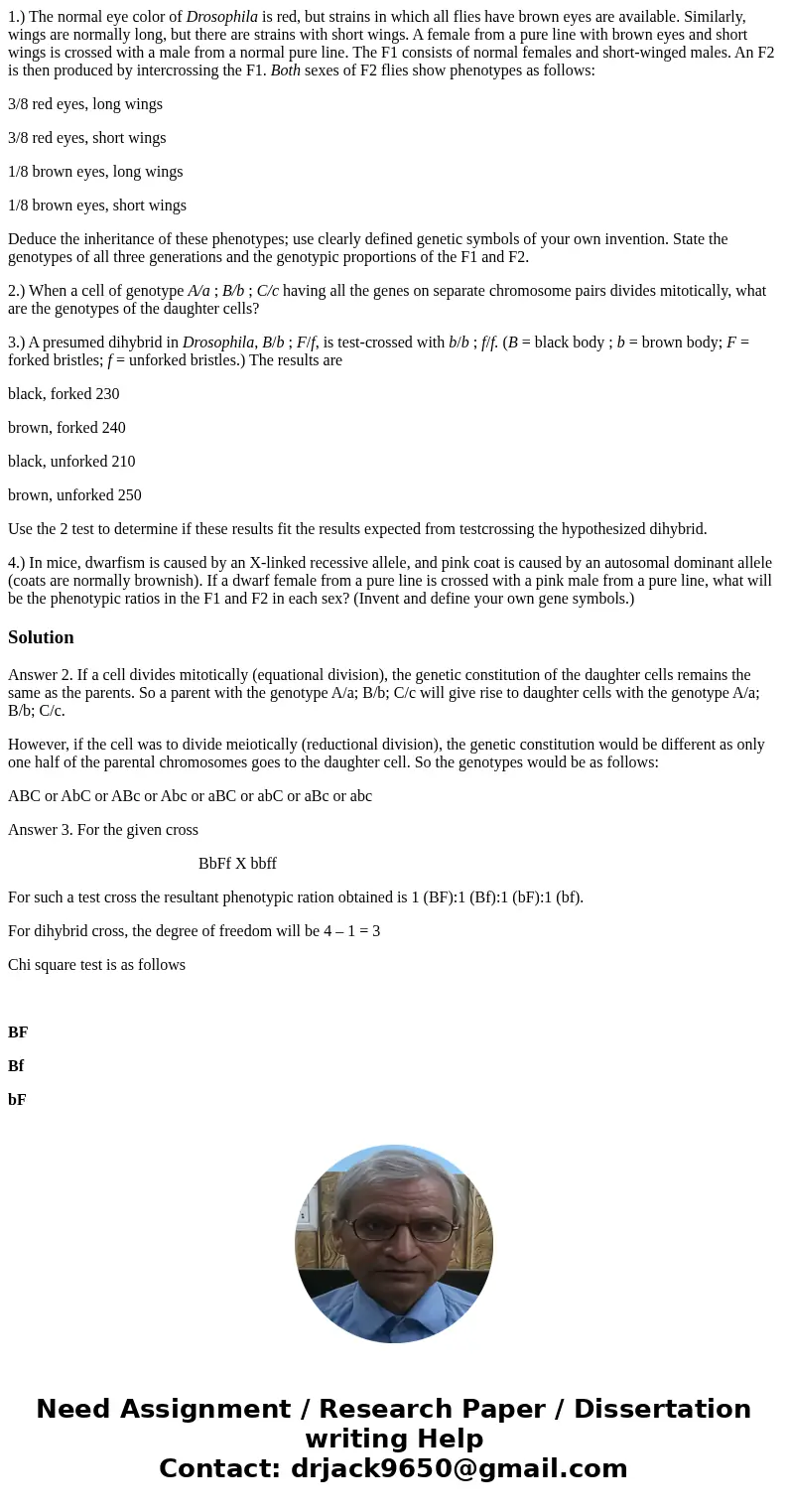
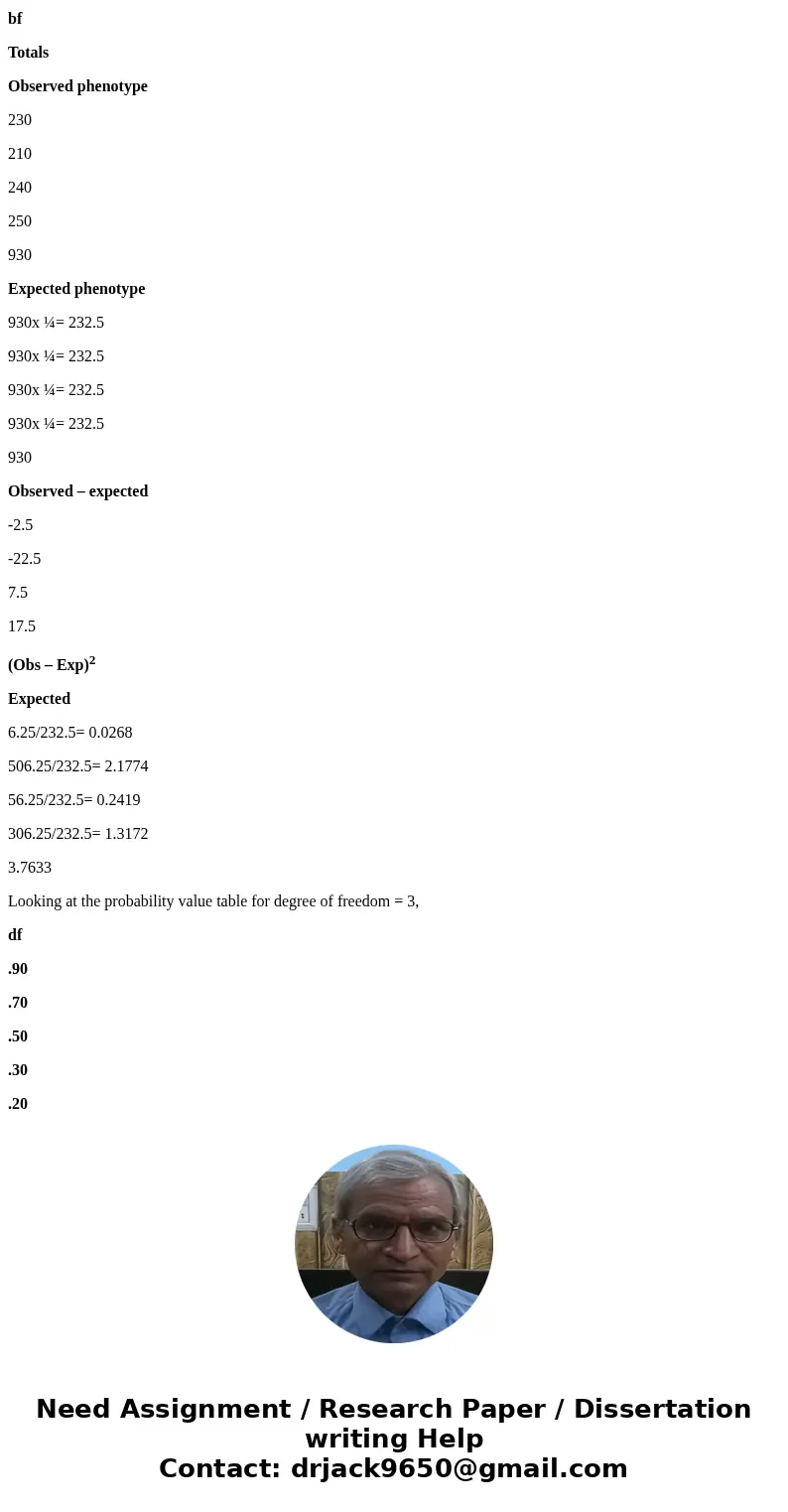
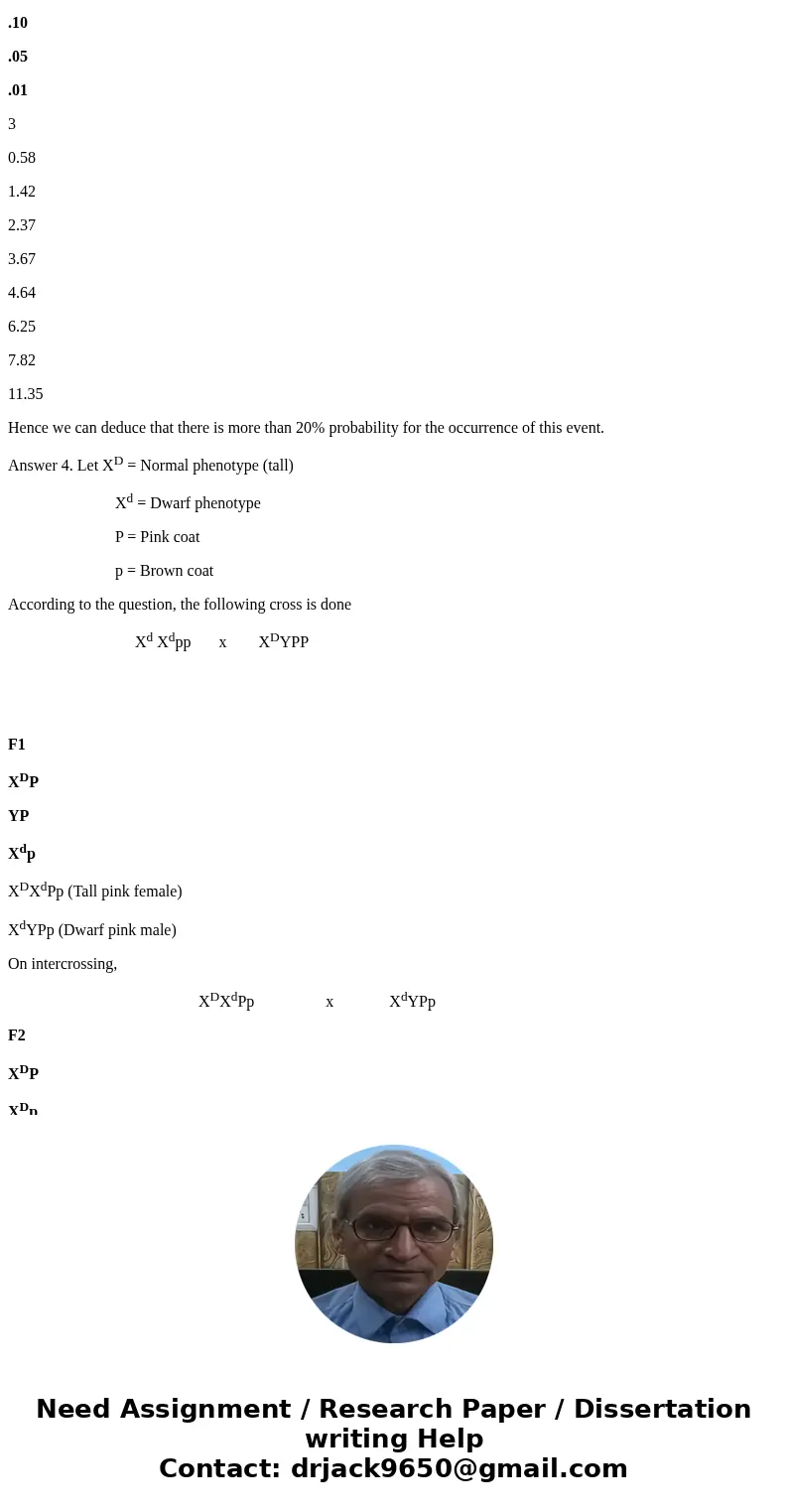
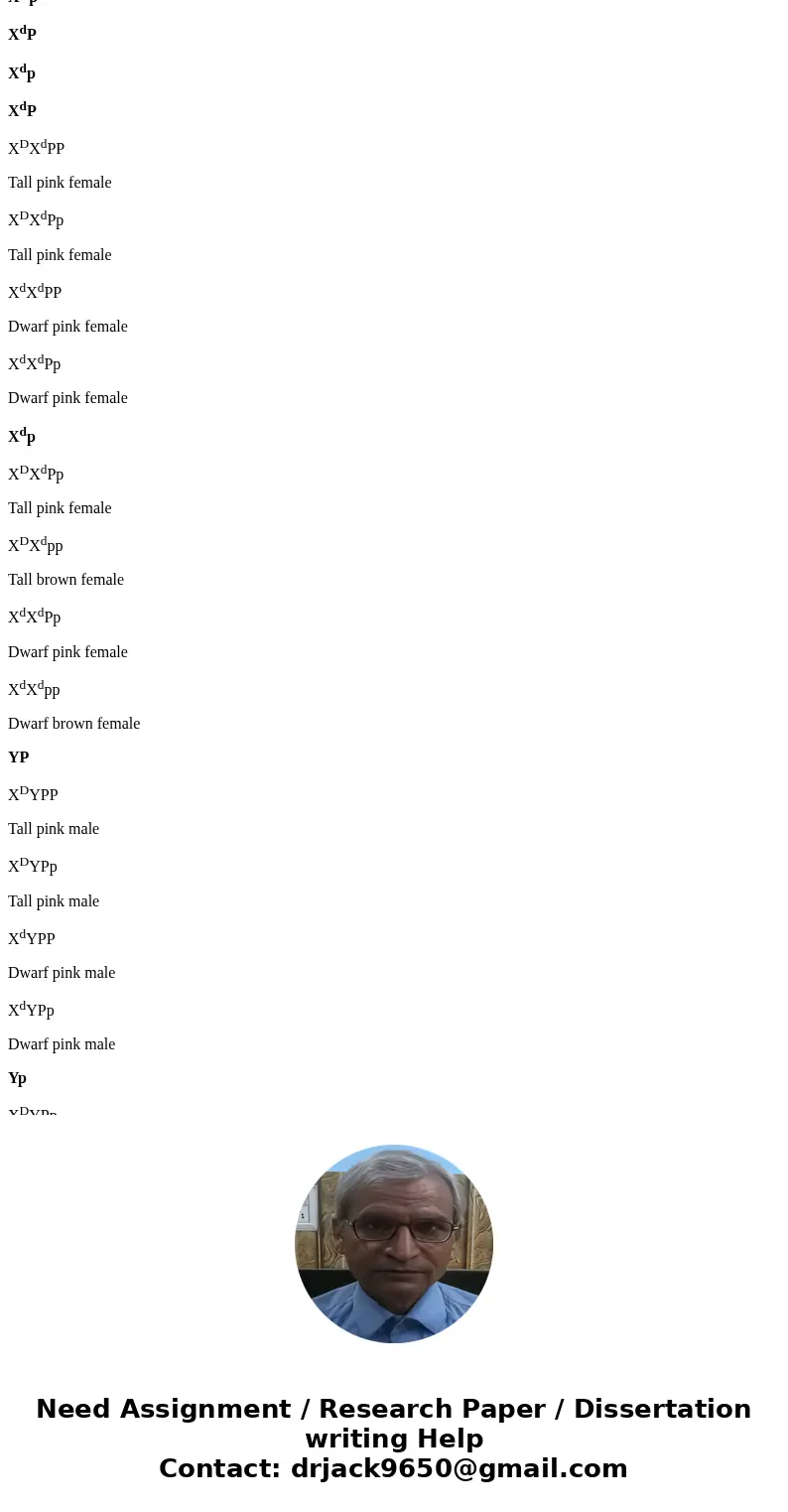
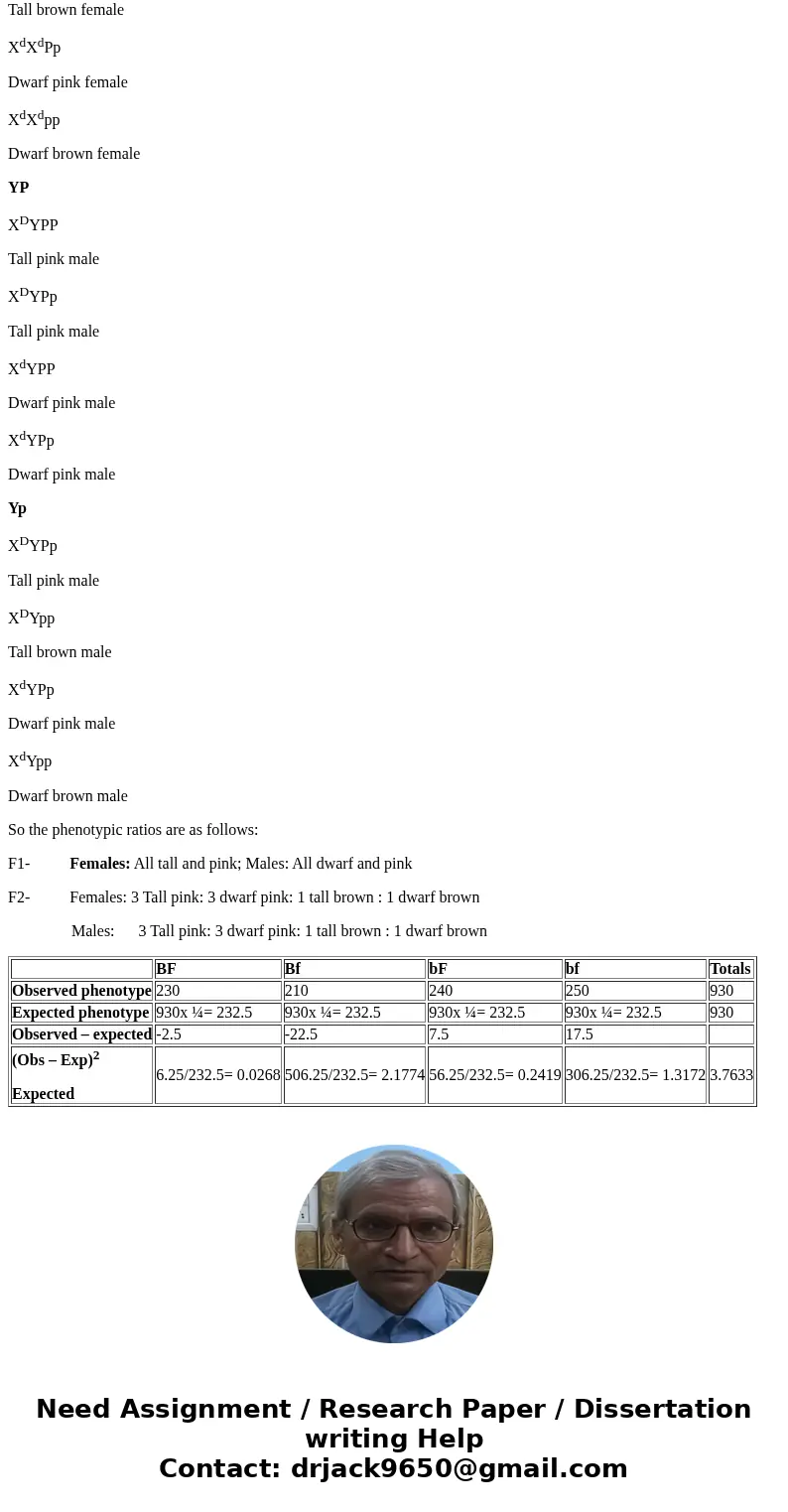
 Homework Sourse
Homework Sourse